Welcome to our comprehensive guide on lobster farming, where we delve into the world of this lucrative business venture. Whether you’re an aspiring entrepreneur or a curious enthusiast, this project report provides a step-by-step roadmap, from the initial instructions to profitability analysis. Discover the project report of lobster farming, including site selection, hatchery management, feeding techniques, and disease prevention. We also explore the crucial aspects of harvesting, processing, and effective marketing strategies.

What is Lobster Farming?
Lobster farming involves the controlled cultivation of lobsters for commercial purposes. It offers a sustainable alternative to wild-caught lobster, ensuring a steady supply of these prized crustaceans.
- Best Species to Grow: The two most commonly farmed lobster species are the American lobster (Homarus americanus) and the European lobster (Homarus gammarus). They are known for their taste, market demand, and suitability for farming conditions.
- Growth and Development: Lobsters go through various stages of development, including larval, juvenile, and adult phases. Each stage requires specific care and optimal environmental conditions for successful growth.
- Farming Systems: Lobsters can be farmed in various systems, such as land-based tanks, sea pens, and recirculating aquaculture systems (RAS). The system choice depends on space availability, water quality, and investment capacity.
Market Demand for Lobster
With the demand for high-value seafood like lobsters increasing, aquaculture and stock enhancement have become crucial to meet market needs. Live lobsters are highly sought after, particularly in affluent countries where customers are willing to pay a premium for fresh seafood. Lobsters are exported in various forms, including live, frozen tails, whole frozen, whole chilled, whole cooked, frozen, and as lobster meat.
The current fishing practices are putting immense pressure on lobster resources, as all sizes of lobsters are caught and marketed. Until commercial hatchery technology becomes viable, short-term fattening can add value to low-value lobsters. Another option is harvesting wild pueruli for commercial grow-out, which is technically and economically feasible. Among spiny lobsters, tropical species are more favorable for farming, as they exhibit tolerance to high stocking densities, communal living without cannibalism, and acceptance of pelleted feed.
These characteristics contribute to the widespread acceptance of lobsters as an aquaculture species. To achieve sustainable aquaculture practices, it is crucial to establish hatchery production of lobster seeds. While progress has been made in completing the larval phase of a few species, commercial hatchery production is yet to be achieved. Promising lobster species in India include Panulirus homarus, P. ornatus, P. polyphagus, and Thenus unimaculatus.
These species can be easily identified based on their color and morphological characteristics. While hatchery production of T. orientalis is established, farming still relies on wild or post-larvae, which are primarily sourced from artisanal fishing gears such as trammel nets, gill nets, traps, and to a lesser extent, trawlers, especially in Maharashtra, Gujarat, and Tamil Nadu.
Preparing for Lobster Farming: Site Selection
- Site Selection: Choose a coastal area with suitable water quality, access to seawater, and protection from strong currents.
- Water Quality: Lobsters are highly sensitive to water quality. Optimal parameters include temperature (12-20°C), salinity (25-35 ppt), dissolved oxygen (6-8 mg/L), and pH (7.5-8.5). Regular monitoring is essential to maintain favorable conditions.
- Accessibility: Select a site that allows easy transportation of supplies, equipment, and harvested lobsters. Proximity to markets is also advantageous for efficient distribution.
- Infrastructure: Design and construct appropriate infrastructure, such as tanks, pens, and hatcheries. Ensure proper water management systems, including filtration and recirculation, to maintain optimal conditions.
- Environmental Impact: Implement sustainable practices to minimize potential negative effects on the surrounding ecosystem.
- Regulatory Compliance: Obtain the necessary permits, licenses, and approvals from local authorities.
Breeding and Hatchery Production of Lobster
- Breeding and hatchery production of various lobster species has been accomplished in India, including P. Homarus, P. polyphagous, P. ornatus, P. longipes, and P. Versicolor.
- These lobsters are maintained in broodstock holding systems and exhibit breeding behavior under optimum environmental conditions. Repetitive breeding has also been observed. Successful rearing to maturity and breeding of P. homarus and P. ornatus juveniles has been achieved in captivity.
- Egg-bearing lobsters procured from fishermen are suitable for egg hatching and rearing. Phyllosoma larvae of P. Homarus can be reared to stage 8 in 42 days using a mixed diet of Artemia and plankton.
- However, the survival rate of Phyllosoma larvae ranges from 0.01 to 10 percent and is influenced by contamination from microorganisms, including protozoans, in the culture environment.
- Commercial seed production technology for most lobster species remains to be determined due to their prolonged larval phase (>300 days) and poor survival rates. As a result, lobster farming relies primarily on naturally available seeds of wild pueruli.
In case you missed it: Lobster Farming Business Plan: Cultivation Practices, Breeding to Harvesting
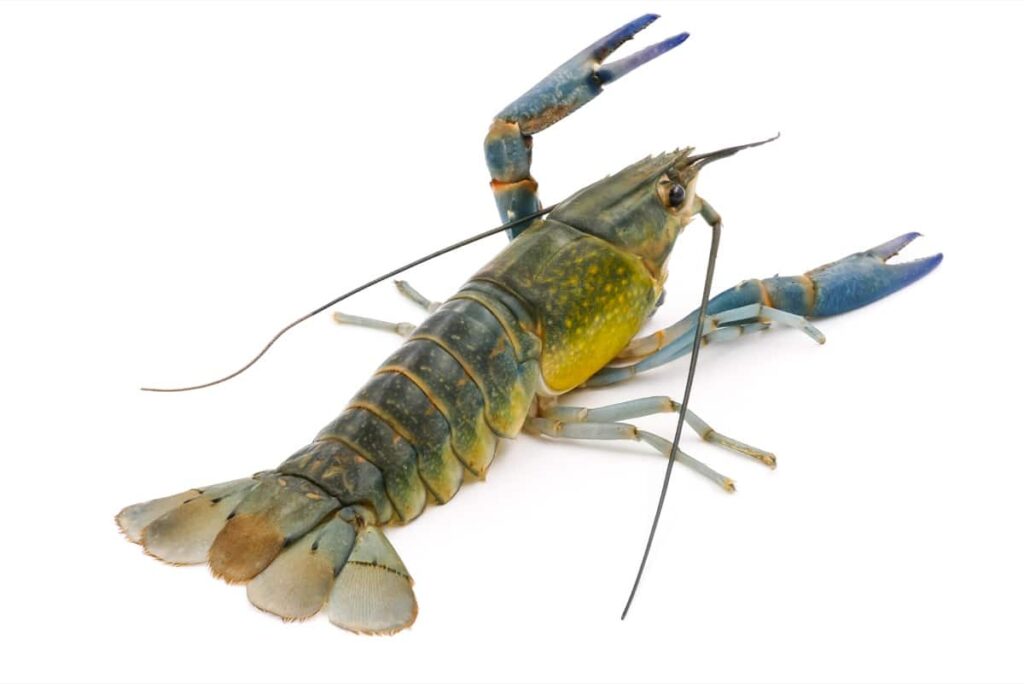
- Wild pueruli are captured using various fishing gears as they move inshore after their oceanic development stage. Trammel gill nets account for approximately 50 percent of lobster captures, with around 2-3 million pueruli caught each year between October and March, predominantly comprising P. ornatus (70%) and P. homarus (25%).
- Juvenile lobsters are kept in wet sand until sold or traders arrive. They can be held in tanks with recirculating systems or cages with higher stocking densities until traded.
- It is important to note that lobsters reared in poor water quality conditions and higher stocking densities are weak and prone to disease, making them unsuitable for grow-out purposes. When transported over longer distances, they may experience slow mortality.
- A reddish coloration of the shell indicates stress in juveniles, so it is crucial to transfer them to water promptly upon reaching the shore. Instead of keeping them in low-quality cages with high stocking, keeping them in wet sand is advisable.
- Care must be taken while removing nets to avoid injuries below the abdomen. Lobsters in unhealthy conditions can become infected by pathogens through these injuries, leading to high mortality rates caused by pathogenic bacteria.
Grow-out in Land-Based Holding System in Lobster Farming
- Growing lobsters in land-based holding systems require appropriate environmental conditions and careful monitoring of water quality parameters.
- Critical parameters include dissolved oxygen, ammonia, nitrite, carbon dioxide, nitrate, pH, salinity, and alkalinity. The concentration of unionized ammonia should be kept below two mg/L, and the oxygen demand is higher during molting and after feeding, typically occurring at night.
- Sudden salinity dilution can lead to stress, disease susceptibility, and mortality, although lobsters can tolerate gradual changes within a limited range.
- In indoor tank systems, two types are commonly used: recirculating and flow-through systems. The recirculating system reuses most of the water after removing waste products.
- Solid waste is removed through mechanical filtration, while ammonia and nitrite are eliminated through biological filtration. Carbon dioxide is expelled by aerating the water. Dissolved oxygen and increased unionized ammonia concentration can be limiting factors in this system.
- In flow-through systems, water is continuously pumped into the tank, and the flow rate is determined by stocking density and feeding intensity. The incoming water should be free of sediments to maintain water quality.
In case you missed it: Project Report of Pangasius Fish Farming: Cultivation Economics, Production Cost, and Profit Analysis
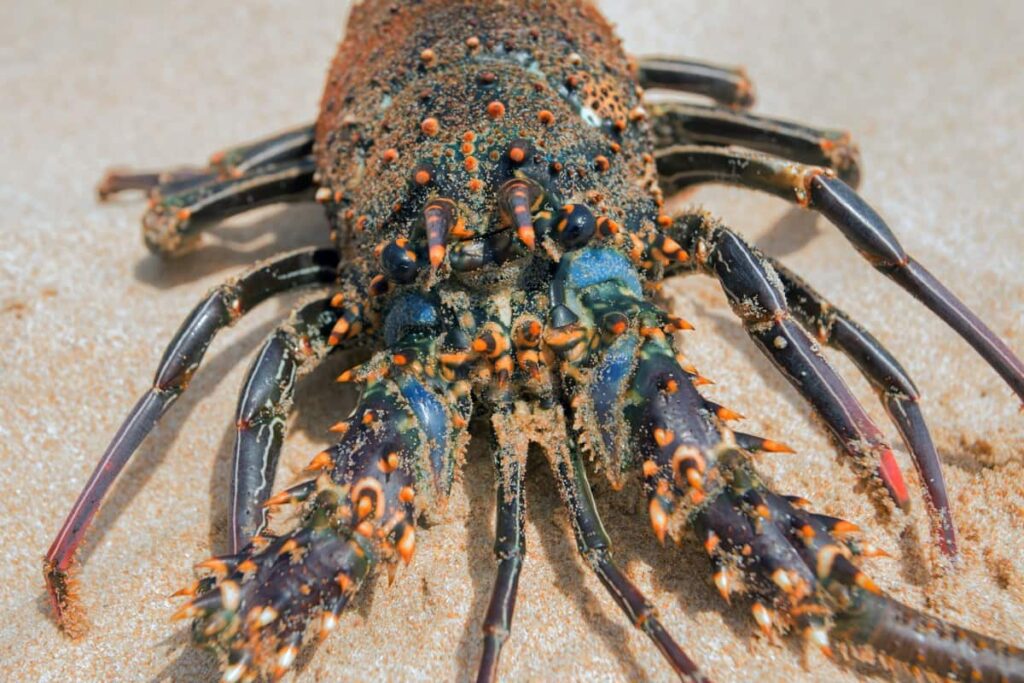
- Healthy individuals are typically stocked at a 1.0-1.25 kg/m² density when stocking lobsters after segregating them into different size groups.
- Hideaways are provided to reduce energy loss during the day. Lobsters can be fed natural feeds like mussels, clams, squid, trash fish, smaller crabs, shrimp meat, and artificial feeds like shrimp pellets. Night feeding is recommended to minimize feed waste and spoilage.
- Open sea cage farming has also been explored for lobster production. Field trials conducted by the Central Marine Fisheries Research Institute (CMFRI) using HDPE cages with a diameter of 6m and a depth of 10′ or more showed promising results.
- Juvenile P. homarus stocked in the cages showed good growth rates, reaching an average weight of 226.0 + 43.0 g in 135 days with a survival rate of 75%.
- The lobsters were fed with mussels and trash fish. This study suggested that open sea cage farming is a cost-effective and biologically feasible method for growing juvenile lobsters to market size, compared to indoor tank systems.
- Factors like supplemental feed from biofouling, reduced stress, natural light levels, and photoperiod likely contributed to the success of sea cage farming.
Tips for Lobster Farming: A Step-by-step Guide
- Select a good location: Look for a location with clean and fresh water, a nearby lobster larvae source, good transportation, and free from pollution and noise. Consider purchasing land or renting.
- Make an effective business plan: Create a detailed and up-to-date business plan, including all aspects of lobster farming. Seek assistance from local experts to ensure viability.
- Determine your lobster farming method: Choose land-based or tank methods and open sea cage systems based on available facilities. Land-based systems require critical water quality parameters like dissolved oxygen, ammonia, nitrate, and carbon dioxide concentration. Indoor tank systems often use recirculating aquaculture systems (RAS) with mechanical and biological filtration. Open sea cage farming involves stocking juveniles in cages and feeding them twice daily.
- Select lobster species for commercial production: Choose species available in your area, such as adik-adik, bamboo, or tiger lobsters. Consider growth rate, demand, and value in the international market.
In case you missed it: Project Report of RAS Fish Farming: Production Economics, Cost, and Profit Analysis
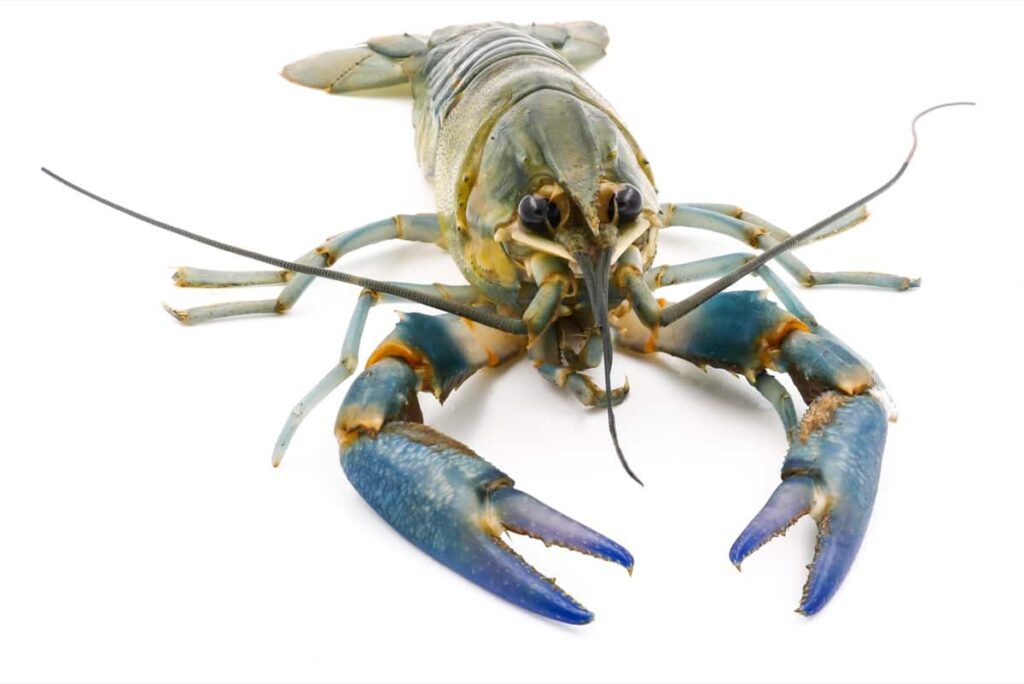
- Purchase larvae and stocking: After selecting the desired species, buy larvae from local suppliers. Consult existing producers for advice on stocking density.
- Feeding: Lobsters are omnivores and eat live prey like fish, mollusks, crustaceans, worms, and some plant life. Provide them with nutritious food twice daily, including mussels and trash fish. Commercially prepared formulated diets can also be used with good conversion rates.
- Breeding: Lobsters are good breeders and can reproduce naturally or in hatcheries. Monitor their health regularly and seek advice from local experts.
- Caring and other management: Take good care of the lobsters by providing proper nutrition and monitoring their health. Maintain regular contact with local experts for guidance.
- Harvesting: Harvest lobsters when they reach minimum marketing size. Use nets to scoop them to avoid damage gently.
- Post-harvesting: Grade lobsters as new-shell, hard, or old, based on shell shedding. Newly shed shells are delicate and more expensive.
Quick Facts about Lobster Farming
- Lobsters are profitable to farm and have high demand in both domestic and international markets.
- To start a profitable lobster farming business, select a suitable location, determine the cultivation method, purchase larvae, provide nutritious food, and properly care for the lobsters.
- The time it takes for lobsters to grow to market size varies depending on the species, ranging from 5 to 7 years.
- Lobsters can be raised in captivity but require specific conditions and care to thrive.
- While lobsters are typically found in saltwater environments, they can also tolerate brackish and freshwater environments.
- It is possible to raise lobsters at home in a tank, making it an accessible option for enthusiasts.
- Lobsters are omnivorous and can be fed live prey or pellet food that sinks to the bottom of the tank.
- Lobsters reproduce once every two years, with mating and eggs hatching within up to 20 months.
- Lobsters are relatively expensive due to their slow growth rate and the time it takes to reach market size.
- Lobsters have distinct characteristics, including compound eyes, antennae, swimming legs, and a muscular tail used for swimming.
In case you missed it: Month-wise Prawn/Shrimp Farm Operations: Management and Maintenance for Better Profits
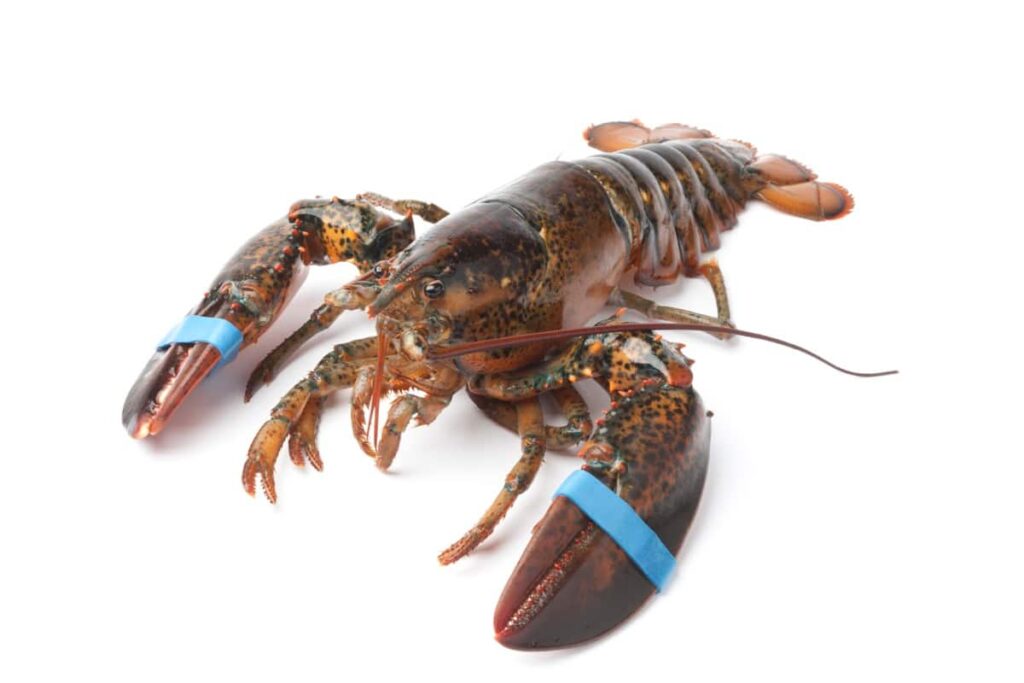
Project Report of Lobster Farming: Financial Analysis and Profitability
A comprehensive analysis of the costs, returns, and profits is necessary to assess a lobster farming project’s financial viability and profitability in India. Scenario for a 1-hectare lobster farming operation in India.
| Investment Cost | Amount |
| Construction of facilities | Rs. 10,00,000 |
| Purchase of larvae and stocking | Rs. 5,00,000 |
| Equipment and materials | Rs. 2,00,000 |
| Operating Costs (per year) | |
| Feed and nutrition | Rs. 6,00,000 |
| Labor | Rs. 4,00,000 |
| Water and electricity | Rs. 1,50,000 |
| Miscellaneous expenses | Rs. 1,00,000 |
| Expected Annual Production | |
| Lobster harvest (marketable size) | 20,000 |
| Revenue Generation | |
| Average selling price per lobster | Rs. 200 |
| Total annual revenue | Rs. 40,00,000 |
| Total Costs (per year) | |
| Operating costs | Rs. 12,50,000 |
| Depreciation and interest on Investment | Rs. 1,50,000 |
| Net Profit (per year) | |
| Total revenue minus total costs | Rs. 25,00,000 |
| Profitability Indicators | |
| Return on investment (ROI) | 260% |
| Net profit margin | 65% |
It is important to note that the figures provided are for reference purposes, and actual costs and profits may vary based on various factors, including market conditions, production efficiency, and management practices.
In case you missed it: Common Shrimp/Prawn Diseases, Symptoms, Treatment: Check How this Guide Helps Shrimp Farmers
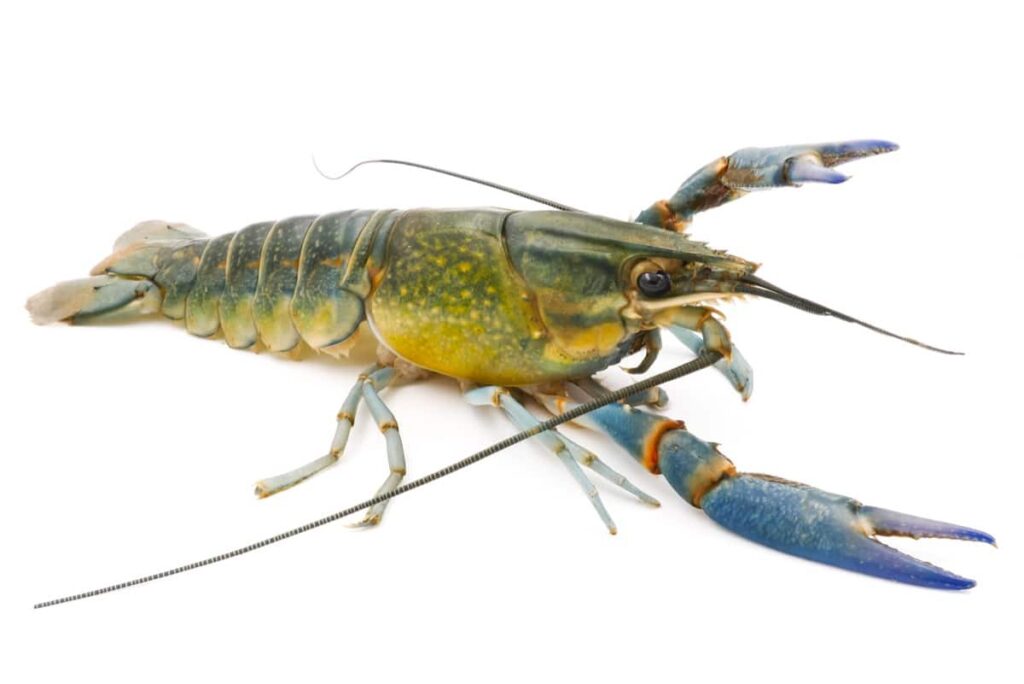
Conclusion
Based on the profit analysis, starting a lobster farming project in India shows promising potential for profitability. With an estimated net profit of Rs. 20,00,000 per year, this venture can provide a strong return on investment and be a lucrative business opportunity in the seafood industry.
- Crops Grown in Summer Season: Best Choices for Summer Gardening
- Organic Pest Control for Tomato Farming
- How to Maximize Sheep Farming Profit
- Broccoli Varieties: Choosing the Right Cultivars for Your Farm
- How to Raise Pigs in Your Own Backyard: A Comprehensive Guide
- Budget Friendly Sheep Shed Ideas: Cheap and Low-Cost Tips
- How Much Do Cattle Farmers Make: Revenue Streams in Cattle Farming
- Management Pests and Diseases in Your Cotton Field
- Sheep Farming Business Plan for Beginners
- Aquaponic Farming at Home: A Step-By-Step Guide
- Profitable Village Farming Business Ideas in 2024
- High-Yield Aquaculture: Fast-Growing Fish for Farming
- Effective Fish Pond Construction Techniques for Beginners
- Irrigation and Water Management in Pineapple Farming
- Blossom to Harvest: Mastering Flowering and Pollination in Papaya Farming
- Pig Fattening Essentials: From Selection to Sale for Beginners
- Raising Wagyu Cattle: A Complete Guide for Premium Beef Production
- Soil Types and Their Water Holding Capacity
- Optimizing Irrigation Schedules for Coconut Groves for Enhanced Yield
- Espresso Your Garden: Coffee Grounds for Healthier Acid-Loving Plants
- The Best Soil Mix for Snake Plants: How to Mix Your Own Snake Plant Soil
- Green Thumb Success: Expert Tips for Cultivating Greenhouse Beans All Year Round
- Bloom All Year Round: The Ultimate Guide to Indoor Hyacinth Care
- Eco-Friendly Gardening: How to Make Liquid Fertilizer from Kitchen Waste
- Ultimate Guide to Grow Anise in Pots: Explore Seed Propagation to Harvesting
- Guide to Raising Chester White Pigs: Discover Breed Facts to Growth Management
- Mastering the Elegance: The Ultimate Guide to Weeping Cherry Tree Care, Planting, and Maintenance
- Ultimate Guide to Planting Garlic in Grow Bags: Growing Strategies for Beginners
- How to Fix Spider Plant Leaf-Related Problems: Natural and Organic Remedies
- 10 Reasons Why Your Tulsi Plant is Shedding Leaves: Home Remedies and Solutions
- Optimizing Growth and Yield: The Advantages of Palm Bunch Ash Fertilizer
- Utilizing Neem Oil Extract as a Natural Pesticide for Hydrangea
- From Soil to Harvest: Various Ways in Which Farmers Can Use AI Tools
- Steps to Encourage and Induce Citrus Flowers: A Comprehensive Guide
- How to Fix Snake Plant Leaf-Related Issues: Natural and Organic Remedies
- Transform Your Garden into a Fragrant Oasis with Raat Ki Rani (Night Blooming Jasmine)
